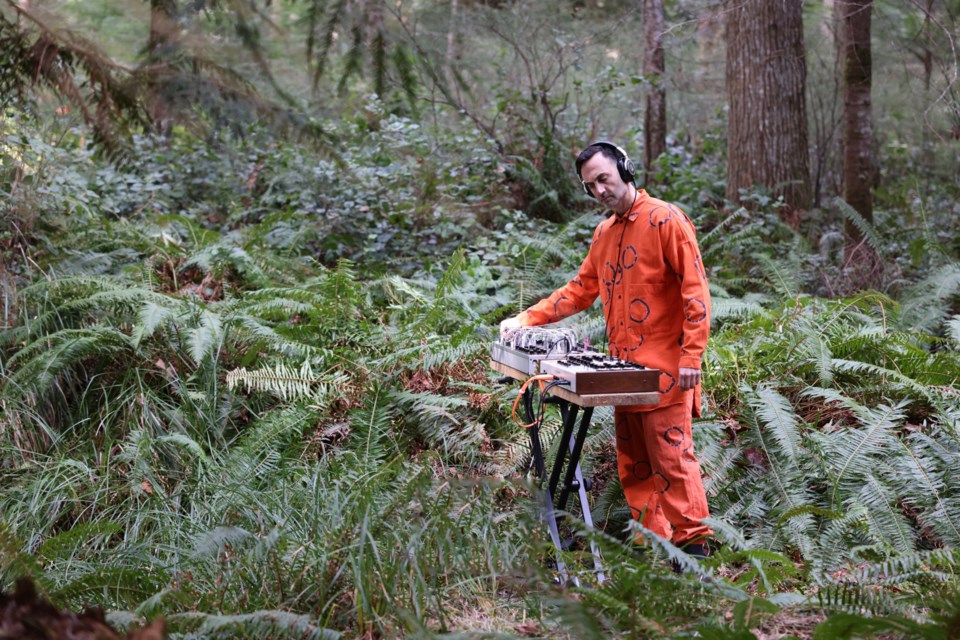When most people see a garden, a meadow, or a forest, they see an environment.
Tarun Nayar sees instruments. Or, more accurately, parts of an instrument.
Nayar, who goes by Modern Biology, is making a name for himself in an unusual corner of the music world. He's using synthesizers and electricity to create music with mushrooms, or other plants and fungi.
Having built his own equipment, Nayar is able to create circuits with organic material and turn that into musical notes. It creates a sort of ambient song, in the tradition of Brian Eno or Terry Riley, he says.
"It's an ambient music experience; we're not making dance music," he tells V.I.A.
And while some of his mushroom music has gone viral, Nayar explains it's just one part of what he's trying to achieve.
"I'm more interested in this greater picture of how we can listen to the environment," he says.
@modernbiology ♬ original sound - modernbiology
How does it work?
The idea of using plants and electric signals to make music is not new; Nayar says there have been people trying it for nearly 50 years, inspired by the 1973 book The Secret Life of Plants.
"I learn a lot from all of the freaks and weirdos who came before me," says Nayar with a laugh.
For his own music, or bio-sonification (the creation of auditory data from a biological source), he's learned how to make his own synthesizers to tap into any living thing by running an electric signal through them.
"As the resistance changes over time, various techniques can be used to turn those changes into note changes on a synth," he explains.
An electrical signal run through something that isn't alive will be constant, like an electrical hum, but organisms cause variation.
"Really what the plants and mushrooms offer is a generative source of data," he says, explaining that they act as a sort of organic resistor (a basic component of an electrical circuit) with oscillations and variation.
Reconnecting with the natural world
While a hike through the forest or Songs of the Humpback Whale are ways to connect with nature through an auditory experience, Nayar says Modern Biology is another, allowing people to hear something that doesn't normally make a sound and connect with it.
"I have found there's something really special about how music can help close the circle," he says.
He's taken groups into nature, for something that's "part foraging expedition, part deep listening experience, and part consciousness exploration." At live performances, he's noticed how people react to the idea that a mushroom can alter a signal.
"People are like 'Holy shit, it's alive!'" he says. "It can be hard to remember that everything is alive. That's the connection I'm trying to make."
A life in music
Nayar has a long history with music; some people may have already recognized his name as one of the founding members of Delhi 2 Dublin, a local group that mixed electronic and world music, specifically Bhangra and Celtic.
As a child, he learned classical music, before branching out into electronica and experimental genres. That experimenting never ended, and as the COVID-19 pandemic arrived it continued to evolve.
He'd already been interested in sound synthesis which led to the nuts-and-bolts of synthesizers. He's taken a few basic classes and learned a lot through YouTube, as well.
Having studied biology in school, the two interests met at what may seem like an unusual junction, but Nayar says it was a "natural part" of his progression.
"I started to see everything as elements of electrical circuits," he says.
While the synthesizers he's made are specialized, the components aren't particularly difficult to come by, he adds, and mostly can be bought at a local electronics shop.
Growing an audience
During the pandemic, he started posting some of his videos as he experimented both with the music side of things and learning TikTok.
"First, with a thimbleberry or salmonberry bush, I noticed there was a lot of positive feedback," he says.
Nayar explored the land around his studio-cabin in the northern Gulf Islands and found lots of material. He notes that he's not the first one to experiment with these ideas, but he has found a way to communicate them on social media.
"The goal is really to reconnect humans to nature," he says of his music.
Now some of his videos have a couple of million views and he's played live with an audience, both at a festival in Miami and on hikes in southern B.C. Soon he'll be traveling to New York for more of his 'field trip' shows, where he partners with a naturalist.
On some field trips there have been 50 or 60 audience members, he says, with the group hiking and foraging and then listening to Nayar's improvised music using what they've found.
Once back in B.C., he plans to continue with Modern Biology in new ways, including a trip to Stanley Park for the trees, and the North Shore in the fall.
He's also released three albums; the most recent is called Field Notes, with more traditional songs based on the sounds he's collected.
@modernbiology ♬ original sound - modernbiology



